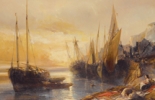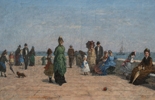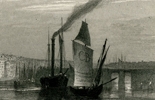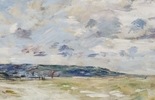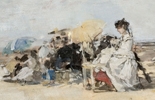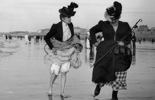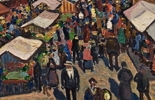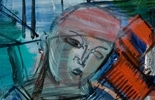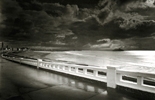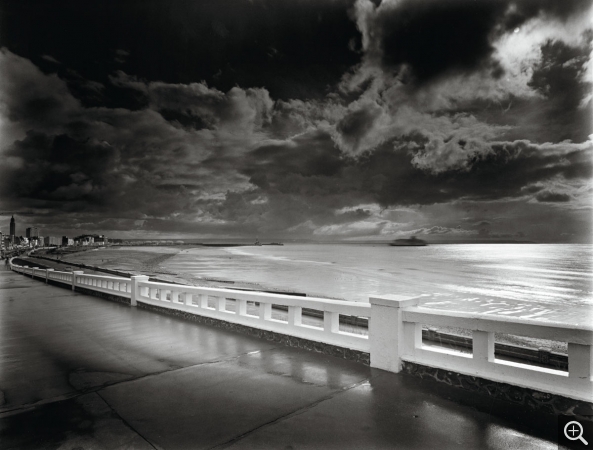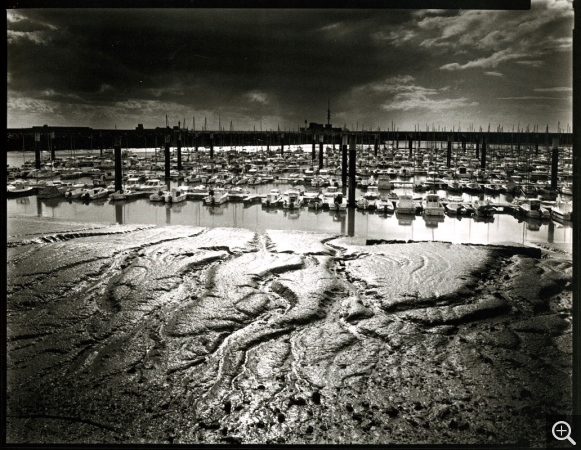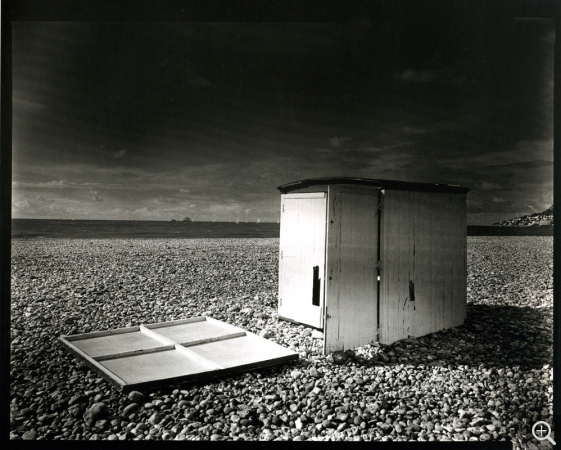L’estuaire de la Seine, l’invention d’un paysage
When Raoul Dufy passed away (1953), the monumental landscape of the Seine estuary suffered upheaval from the bombings of World War II. A little later in the 20th century, photographers would be the ones to continue the great artistic tradition that began in the early 1820s.
Some like Olivier Mériel, who was born in the region in 1955, would follow in the footsteps of those who came before them. But Olivier Mériel is perhaps the one whose work maintains the most continuity with the Impressionist painters by his approach to light and his subjects of preference. Like the Impressionists before him, Mériel evokes the quality of this distinctive light, which he prefers in the spring or fall, as opposed to the summer. He opted for the view camera, despite being cumbersome to use, because of the purity of light it affords. Working with black and white was another obvious choice, as the most suitable means of recreating subtle plays of light. He develops his own photos through direct contact of the plate with high-silver-content paper, toned with platinum.
For 35 years, the photographer has travelled the length and breadth of Normandy, from Mont-Saint-Michel to Dieppe, following the banks of the Seine, delving deep into the countryside, and stopping in cities along the way. The selection presented here shows his wanderings, his returns to the places painted, drawn, engraved by others before him, and the distance he can create between them like this shot of the Rouen Cathedral at night with Christmas market stalls… a mischievous and modern allusion to the famous series by Claude Monet.
Regardless of the subject captured on film, he offers a luminous and transfigured vision of reality and, like the Impressionists, makes the quiver of light his true focus.
Some like Olivier Mériel, who was born in the region in 1955, would follow in the footsteps of those who came before them. But Olivier Mériel is perhaps the one whose work maintains the most continuity with the Impressionist painters by his approach to light and his subjects of preference. Like the Impressionists before him, Mériel evokes the quality of this distinctive light, which he prefers in the spring or fall, as opposed to the summer. He opted for the view camera, despite being cumbersome to use, because of the purity of light it affords. Working with black and white was another obvious choice, as the most suitable means of recreating subtle plays of light. He develops his own photos through direct contact of the plate with high-silver-content paper, toned with platinum.
For 35 years, the photographer has travelled the length and breadth of Normandy, from Mont-Saint-Michel to Dieppe, following the banks of the Seine, delving deep into the countryside, and stopping in cities along the way. The selection presented here shows his wanderings, his returns to the places painted, drawn, engraved by others before him, and the distance he can create between them like this shot of the Rouen Cathedral at night with Christmas market stalls… a mischievous and modern allusion to the famous series by Claude Monet.
Regardless of the subject captured on film, he offers a luminous and transfigured vision of reality and, like the Impressionists, makes the quiver of light his true focus.


